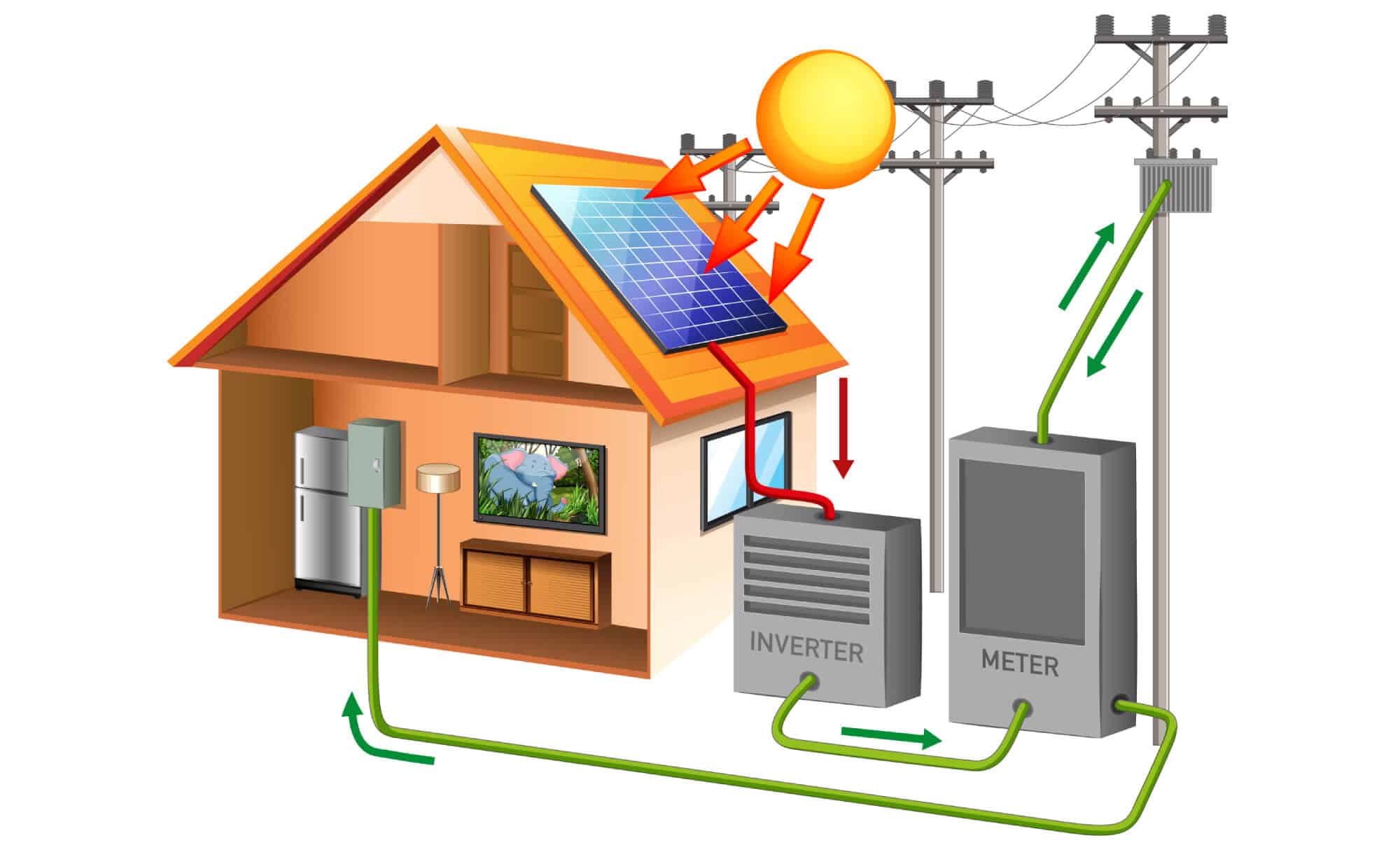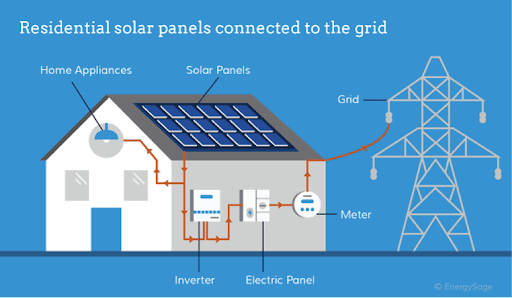TECHNOLOGY
Think of solar inverters as a switch- for your solar panels. Once you have one, you can convert the output energy from the panels into a more convenient, useful form.

A solar inverter is a device that converts the direct current (DC) generated from the solar panels into alternating current (AC) which is used by all domestic and commercial appliances. It is one of the most critical components as it converts the power from the sun into more useful energy .

The sun shines down on your solar panels (or photovoltaic (PV) cells), which are made of semiconductor layers of crystalline silicon or gallium arsenide. These layers are a combination of both positive and negative layers, which are connected by a junction. When the sun shines, the semiconductor layers absorb the light and send the energy to the PV cell. This energy runs around and bumps electrons lose, and they move between the positive and negative layers, producing an electric current known as direct current (DC). Once this energy is produced, it is sent to the inverter
In DC, electricity is maintained at constant voltage in one direction. In AC, electricity flows in both directions in the circuit as the voltage changes from positive to negative.
Fundamentally, an inverter accomplishes the DC-to-AC conversion by switching the direction of a DC input back and forth very rapidly. As a result, a DC input becomes an AC output. In addition, filters and other electronic s can be used to produce a voltage that varies as a clean, repeating wave that can be injected into the power grid.
There are 5 different types of inverters.
String Inverters:
These are the oldest and most common type of solar inverter . They are used by connecting a string of solar panels to a single inverter, which converts the total DC output into AC input.
String inverters are usually located centrally on the side of your house for easier access to monitor and repair the inverter. Also these inverters are reliable because of how long they have been around. While string inverters are reliable, they are also less efficient at optimizing solar energy output. Because string inverters are connected to an entire string of solar panels, shading on one solar panel will cut the power output of the entire string.
Power Optimizers:
These optimizers are located on the back of each panel and work in conjunction with a string inverter to convert the output to the desired form . This is done by conditioning the DC electricity from each panel and sending that conditioned DC to the string inverter to convert to AC electricity.
Because power optimizers can condition the DC electricity produced by each individual solar panel, they can decrease the impact of shading on individual panels.However, Power optimizers are more expensive than using just a string inverter, but they are still less expensive than microinverters.
Microinverters:
This is the latest in solar technology and directly converts DC to AC on the back of each solar panel. No string inverter is involved as the whole process of conversion is completed on the spot.
If shade covers one panel, only that panel will produce less power output as opposed to the whole system output decreasing, as in a string inverter setup.Microinverters are also easy to expand with your solar system in the future. Any solar panel that is added to the system just needs to have a microinverter installed on the back of the panel. However, Microinverters are the most expensive of the solar inverter options.
Central Inverter:
These are related to string inverters however they are larger & support additional strings of solar panels. Rather than running strings openly to the inverter, the strings are combined together in a general combiner box so that the DC power runs toward the middle inverter wherever it is transformed to AC power.
Hybrid Inverters:
This inverter is also known as a multi-mode inverter and allows plugging batteries into the solar power system. It interfaces the battery through a method known as DC coupling. When you pair your solar panel system with a hybrid inverter, a separate battery inverter isn’t necessary: it can function as both an inverter for electricity from your solar panels and a solar battery.